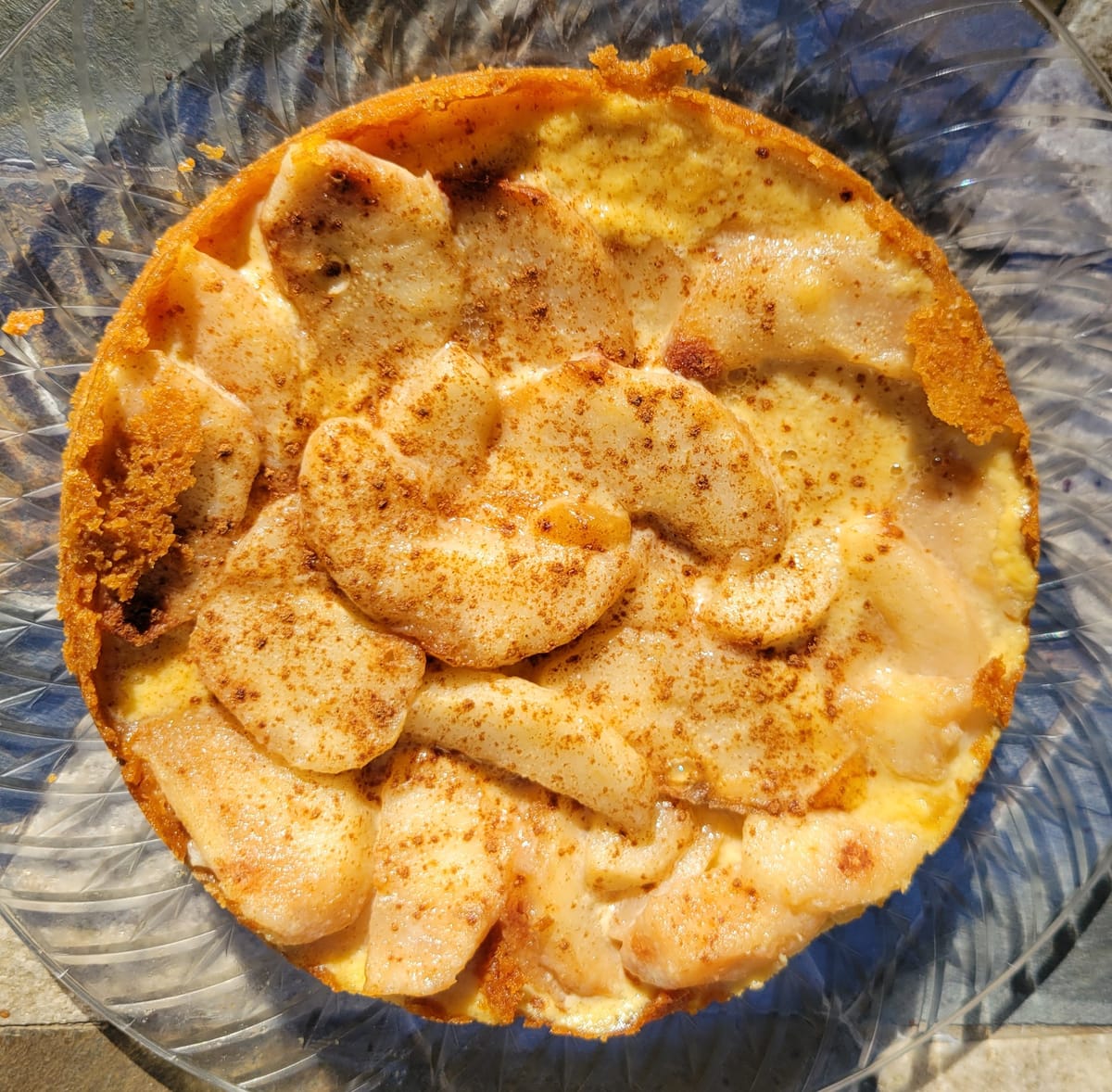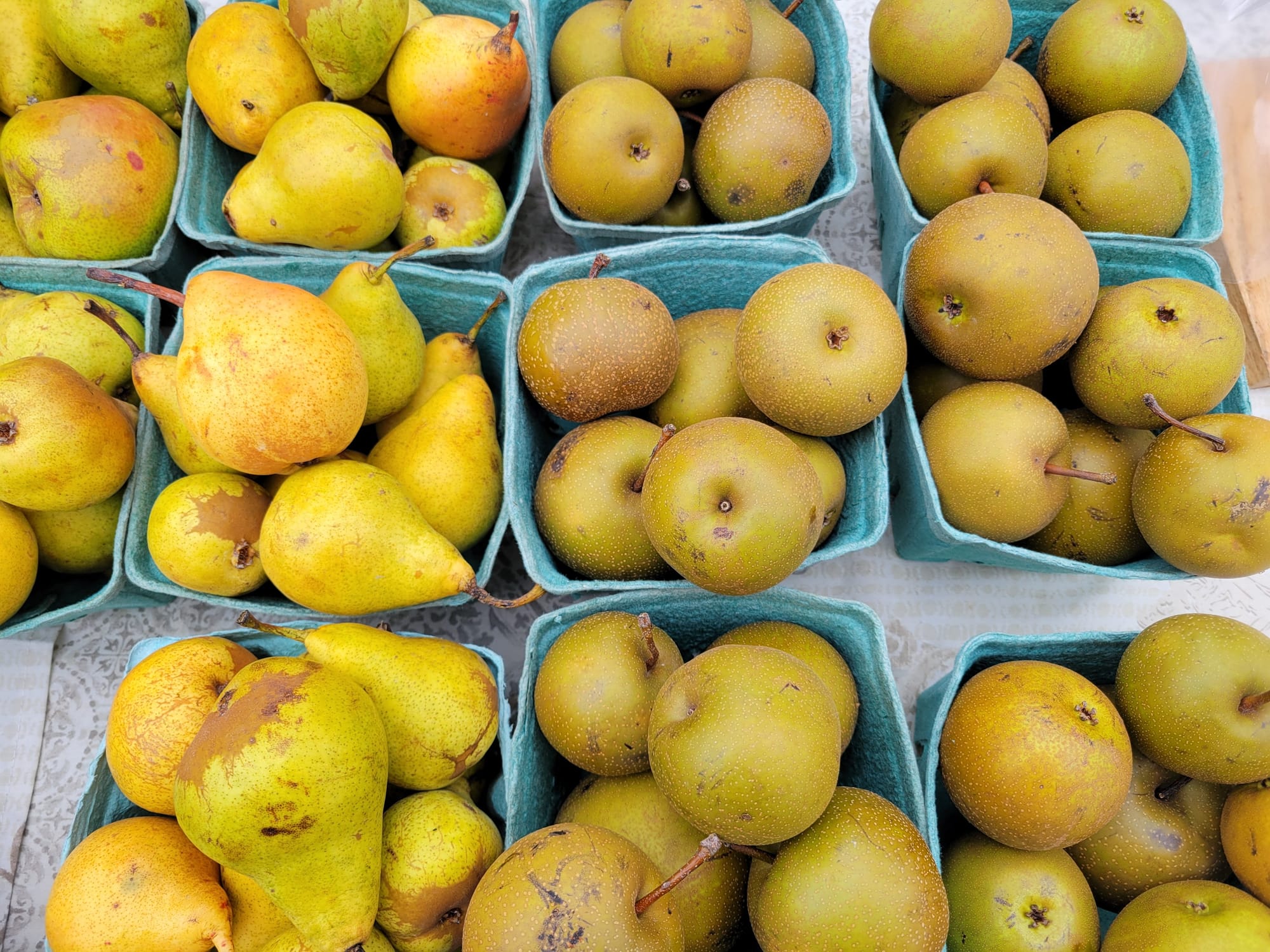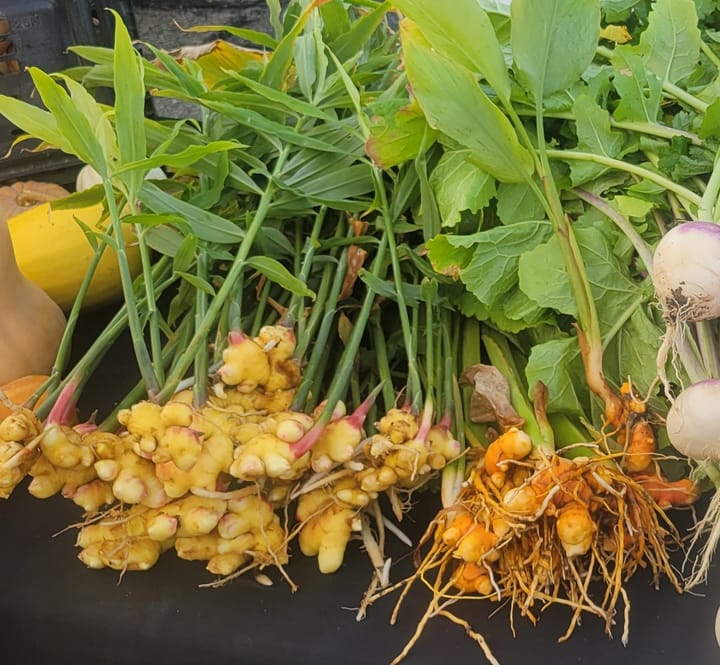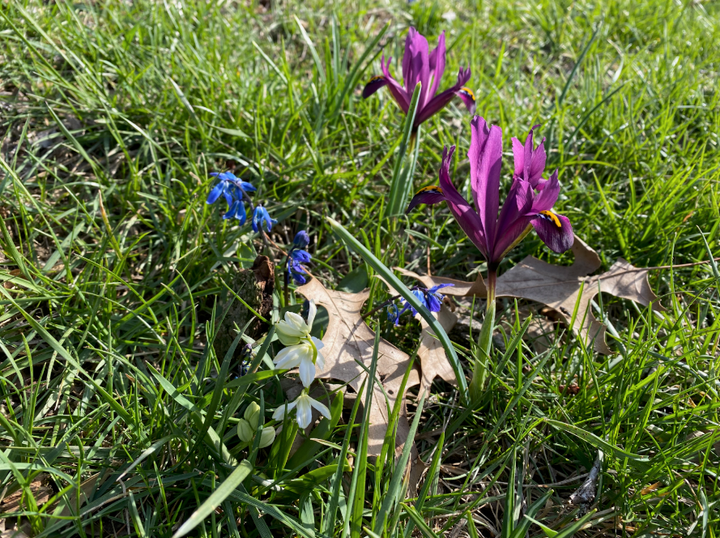On My Plate: Pears
Not only are pears scarce here, production across the United States has declined by more than one-third in the past decade.

What’s happened to local pears? That’s the question I posed to several local growers at Oxford’s Farmers Market last week. This is my 650th column about local food, starting in the old Oxford Press 12 years ago and it’s the first time I’ve written about local pears.
As I added some Downing Fruit Farms pears to my shopping bag last week, I asked Scott Downing if I had simply missed them amid the late summer abundance of apples, peaches, peppers and tomatoes. No, Scott explained, he rarely has pears, and no one else at Oxford’s Farmers Market ever has them.
Most of the other growers who form the core of Oxford’s Farmers Market have pear trees on their farms, but they all tell me that their trees rarely (if ever) produce fruit. The pear trees on Jennifer Bayne’s 7 Wonders Farm bear fruit that are “too ugly to bring to the Farmers Market,” according to Jennifer. Greg Hamm’s pears are much too small and wrinkled to eat, let alone sell. Other local growers report that their pear trees don’t even have blossoms.
This year, Scott managed to harvest a few Western pears in early September, though he expects to have Asian pears for another week or two. Compared with Western bell-shaped pears, Asian pears are round and have a crunchy apple-like texture.

Not only are pears scarce here, production across the United States has declined by more than one-third in the past decade. Multiple theories are offered for the sharp decline. Pears are especially sensitive to severe weather conditions, and the Pacific Northwest, where 95% of U.S. pears are harvested, has suffered from droughts, floods and late frosts in recent years. The pear is the “official fruit” of Oregon, so they are trying to maintain their affinity for the fruit.
Declining consumption of pears may also be related to challenges for consumers to know when they are ripe, especially given that nearly all supermarket pears are harvested thousands of miles away from here. Western pears are especially hard to know when they are ready to eat, though Asian pears are typically ready to eat as soon as they are harvested.
Scott Downing cites fire blight as an important cause of declining pear production around here. According to Scott, bacteria carried by pollinating insects, especially honeybees, are killing blossoms, branches and even entire trees.
My fascination with pears peaked in college. My major adviser invited 20 of us to his house and served us Poire William, a brandy with a whole pear inside the bottle. The bottle is tied around a flower on a pear tree, and the fruit grows inside the bottle. As inexperienced as I was with alcoholic beverages, I had never seen such a thing.
I like to look for some sort of connection to popular culture, and the obvious one for pears was the first day of Christmas, when my true love gave to me a partridge in a pear tree. The image is nonsensical because partridges are ground-dwelling, so they wouldn’t be dwelling in any tree, let alone a pear tree.
What’s worse for our poor suffering fruit, the lyric actually has nothing to do with pears. Turns out the original line was “a partridge and a perdrix.” The British had more knowledge of French centuries ago, and the French word for partridge is “perdrix,” which is pronounced “pear-dree.” As knowledge of French faded among English speakers, the unfamiliar “perdrix” was rewritten as “pear tree,” thus leaving the pronunciation essentially unchanged.
James Rubenstein is president of the Board of Directors for the Oxford Free Press and professor emeritus of geography at Miami University.




